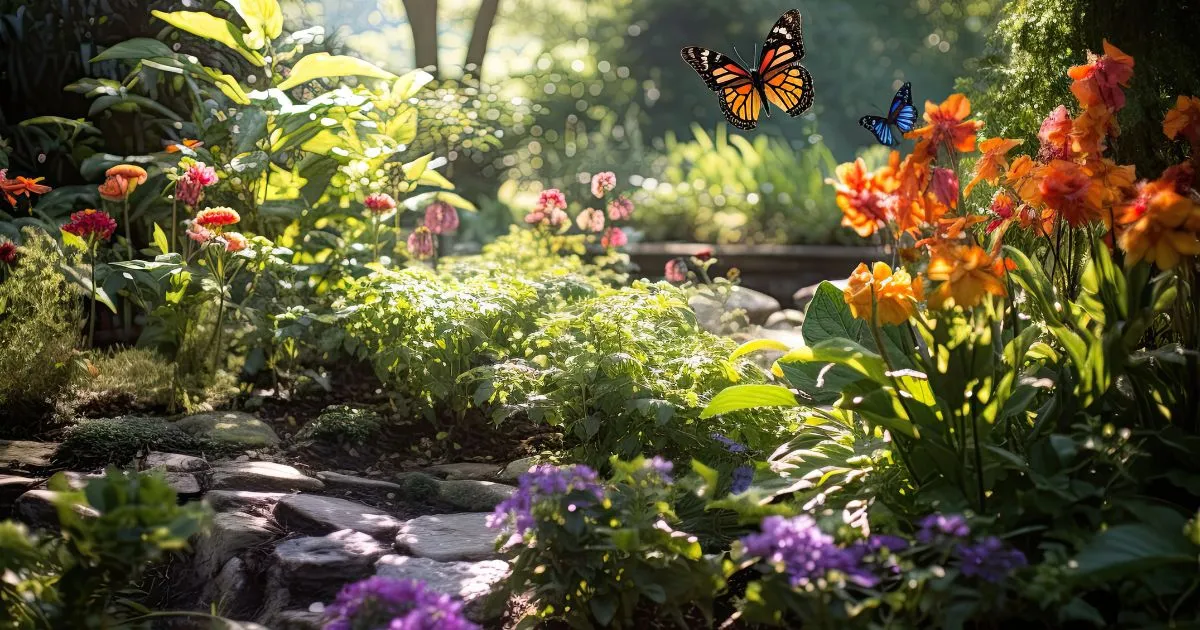Table of Contents
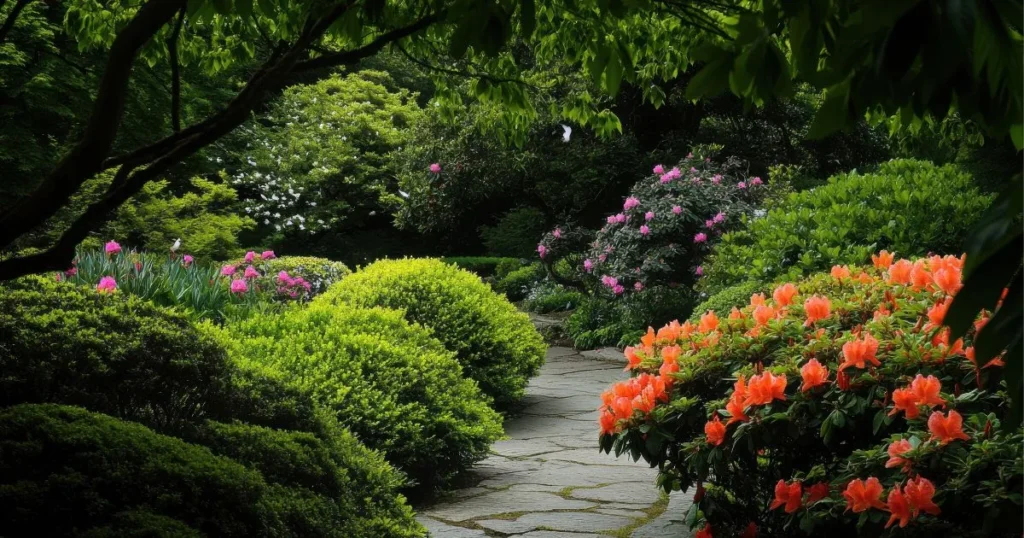
Introduction to Shade Gardens
Shade gardens are a unique and enchanting way to transform those dimly lit areas of your yard into vibrant, lush retreats. Unlike traditional gardens that thrive under the full sun, shade gardens are designed to flourish in low-light conditions, making them perfect for spaces under trees, along north-facing walls, or in the shadow of buildings. These gardens offer a serene and cool environment, providing a refreshing escape from the heat of the sun. In this article, we will explore the intricacies of shade gardens, from understanding the different types of shade to selecting the right plants and maintaining your garden for long-term success.
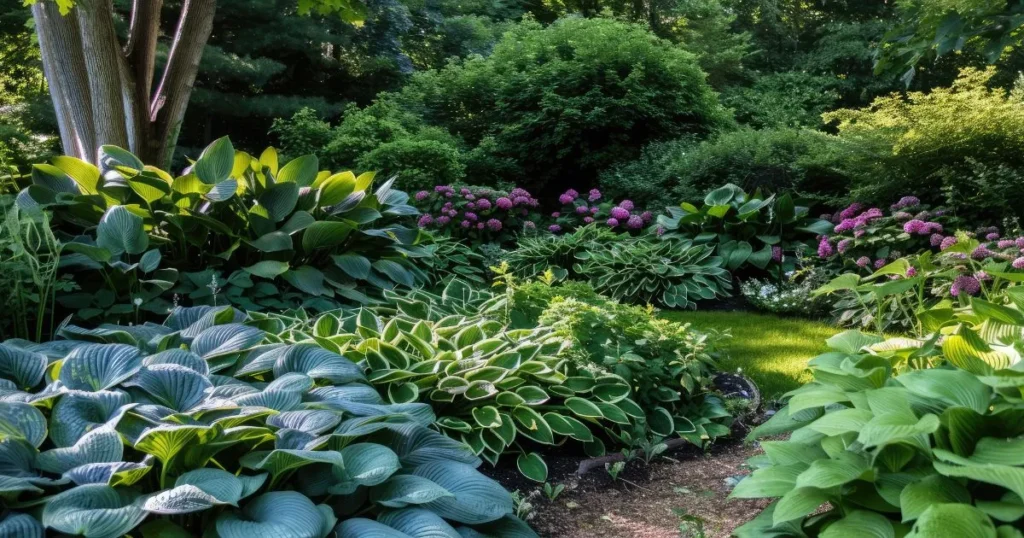
Understanding the Different Types of Shade
Full Shade vs. Partial Shade
Before diving into the world of shade gardens, it’s essential to understand the different types of shade. Full shade refers to areas that receive no direct sunlight, such as the north side of a building or under dense tree canopies. Partial shade, on the other hand, refers to areas that receive some sunlight, typically in the morning or late afternoon, but are shaded for the rest of the day. Understanding the type of shade in your garden will help you choose the right plants and design a garden that thrives.
Dappled Shade
Another type of shade to consider is dappled shade, which occurs when sunlight filters through the leaves of trees, creating a mosaic of light and shadow. This type of shade is ideal for many shade-loving plants, as it provides a balance of light and protection from the harsh midday sun.
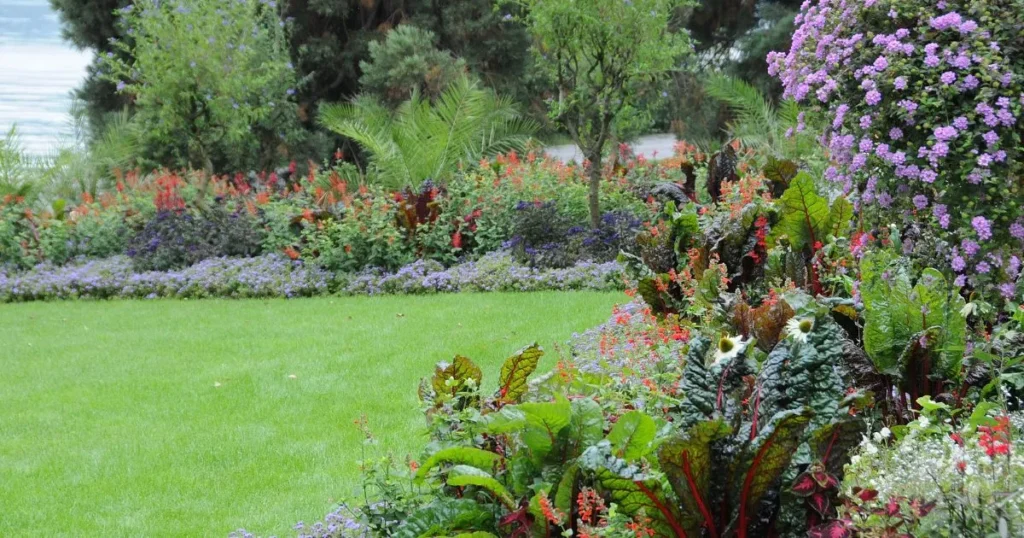
Designing Your Shade Garden
Assessing Your Space
The first step in creating a shade garden is to assess your space. Take note of the areas in your yard that receive the least amount of sunlight and observe how the light changes throughout the day. This will help you determine the type of shade you’re dealing with and guide your plant selection.
Creating a Layout
Once you’ve assessed your space, it’s time to create a layout for your shade garden. Consider the natural features of your yard, such as trees, rocks, and slopes, and incorporate them into your design. Use pathways, borders, and focal points to create a sense of structure and flow. Remember, a well-designed shade garden should feel like a natural extension of your landscape.
Choosing the Right Plants
Selecting the right plants is crucial for the success of your shade garden. Look for plants that are well-suited to the specific type of shade in your garden. Some popular choices for shade gardens include:
- Hostas: Known for their lush foliage, hostas are a staple in shade gardens. They come in a variety of sizes, colors, and textures, making them a versatile choice.
- Ferns: Ferns add a touch of elegance to any shade garden. Their delicate fronds create a soft, feathery texture that contrasts beautifully with other plants.
- Astilbes: With their plume-like flowers, astilbes add a pop of color to shade gardens. They thrive in moist, well-drained soil and are perfect for adding height and interest.
- Heucheras: Also known as coral bells, heucheras are prized for their vibrant foliage. They come in a range of colors, from deep burgundy to bright lime green, and are a great way to add color to shady areas.
- Bleeding Hearts: These charming plants produce heart-shaped flowers that dangle from arching stems. They are a classic choice for shade gardens and add a romantic touch.
Incorporating Hardscaping
In addition to plants, consider incorporating hardscaping elements into your shade garden. Pathways, benches, and water features can add structure and interest to your garden, creating a more inviting and functional space. Use materials that complement the natural surroundings, such as stone, wood, or gravel, to create a cohesive look.
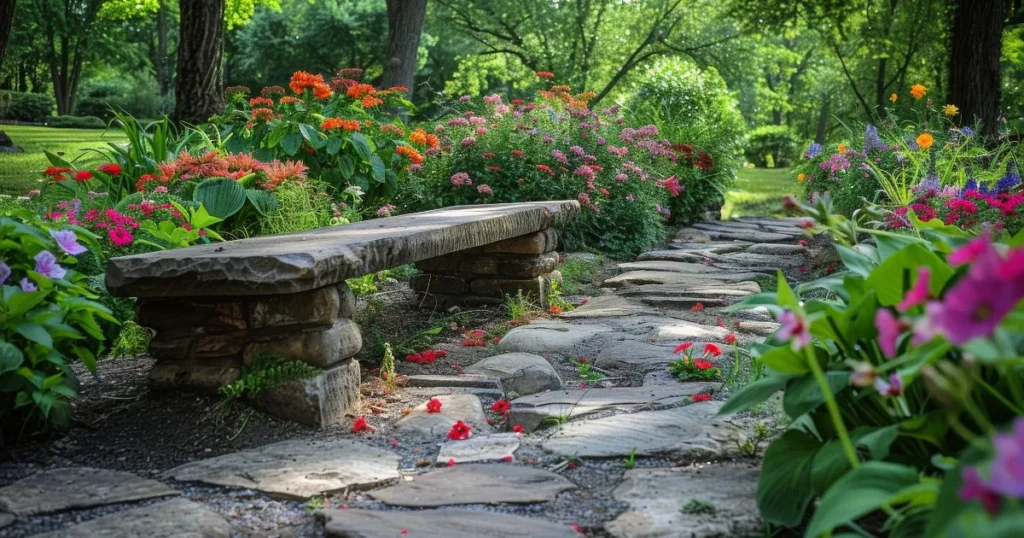
Maintaining Your Shade Garden
Soil Preparation
Proper soil preparation is essential for the health of your shade garden. Most shade-loving plants prefer moist, well-drained soil that is rich in organic matter. Before planting, amend your soil with compost or well-rotted manure to improve its texture and fertility. This will provide your plants with the nutrients they need to thrive.
Watering and Mulching
Shade gardens often require less water than sun-loving gardens, as the soil tends to retain moisture longer. However, it’s still important to water your plants regularly, especially during dry spells. Mulching is another key aspect of shade garden maintenance. A layer of mulch helps retain soil moisture, suppress weeds, and regulate soil temperature. Use organic mulch, such as shredded bark or leaf mold, to improve soil health over time.
Pruning and Deadheading
Regular pruning and deadheading are essential for maintaining the health and appearance of your shade garden. Remove any dead or diseased foliage to prevent the spread of disease and encourage new growth. Deadheading spent flowers will also promote continuous blooming and keep your garden looking fresh and vibrant.
Pest and Disease Management
While shade gardens are generally less prone to pests and diseases than sun gardens, it’s still important to keep an eye out for any issues. Common pests in shade gardens include slugs, snails, and aphids. Use organic pest control methods, such as hand-picking or introducing beneficial insects, to keep these pests in check. Regularly inspect your plants for signs of disease, such as leaf spots or mold, and take appropriate action to prevent the spread.
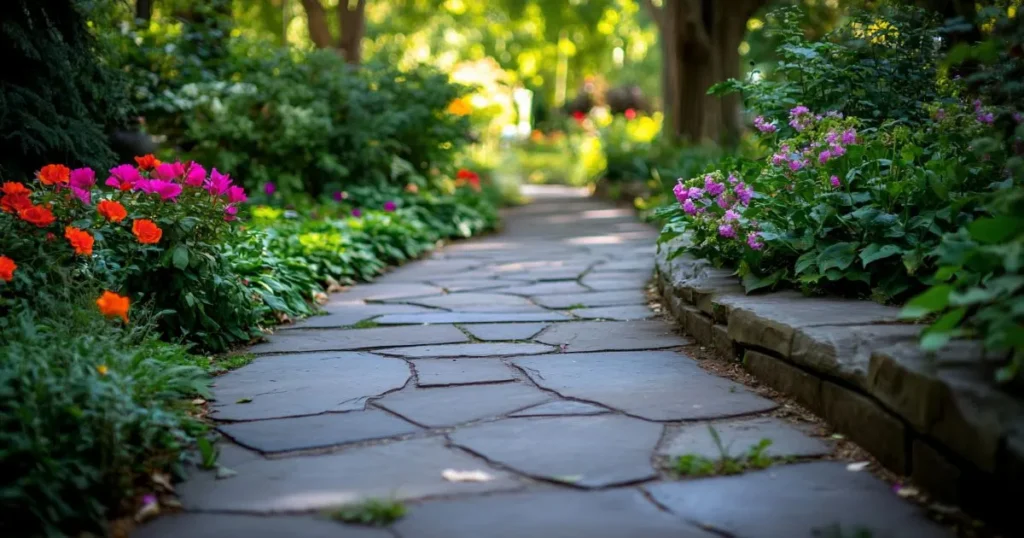
Enhancing Your Shade Garden with Accessories
Lighting
Adding lighting to your shade garden can create a magical atmosphere, especially in the evening. Use solar-powered or low-voltage lights to highlight pathways, focal points, and plants. Soft, diffused lighting will enhance the natural beauty of your garden without overwhelming the space.
Garden Art
Garden art, such as sculptures, birdbaths, and wind chimes, can add a personal touch to your shade garden. Choose pieces that complement the style of your garden and reflect your personality. Garden art can serve as a focal point or add a whimsical element to your space.
Seating Areas
Creating seating areas in your shade garden allows you to fully enjoy the tranquility of your space. Place a bench or a set of chairs in a quiet corner where you can relax and take in the beauty of your garden. Consider adding a small table for a cup of tea or a good book.
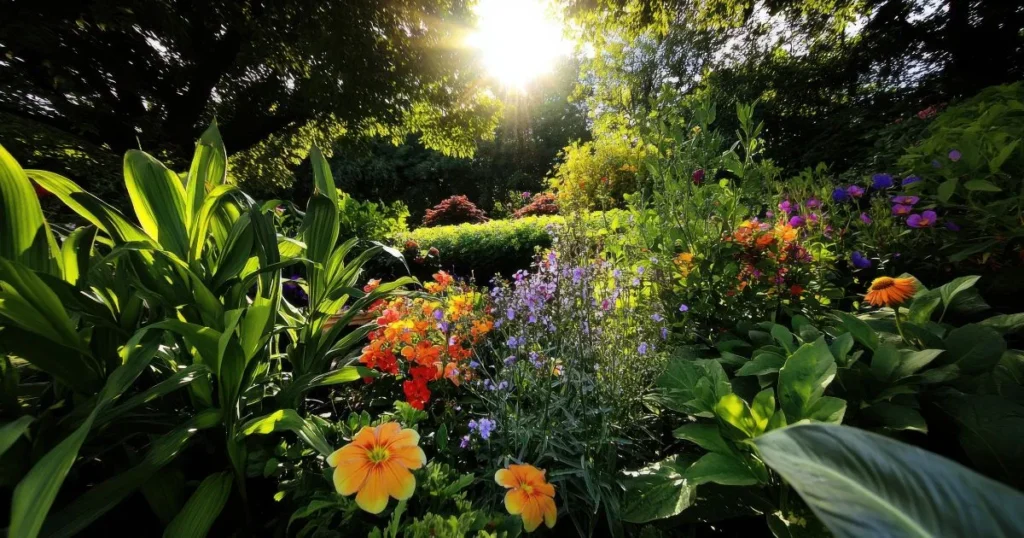
Conclusion: The Beauty of Shade Gardens
Shade gardens offer a unique opportunity to create a lush, serene oasis in the shadows. By understanding the different types of shade, selecting the right plants, and maintaining your garden with care, you can transform even the darkest corners of your yard into a vibrant and inviting space. Whether you’re looking to create a peaceful retreat or a stunning visual display, a shade garden is a wonderful addition to any landscape. With a little planning and creativity, you can enjoy the beauty and tranquility of a shade garden for years to come.
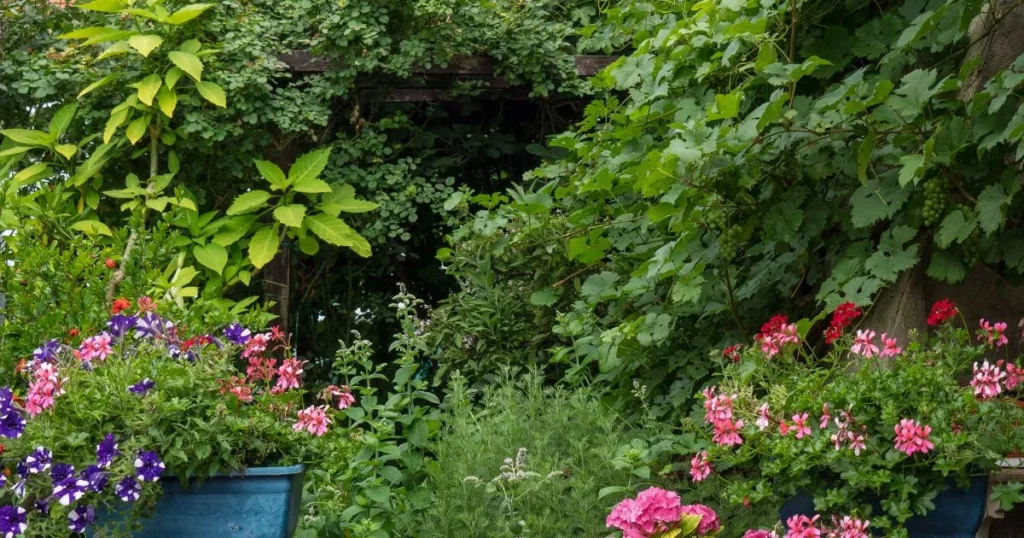
Frequently Asked Questions (FAQ)
What are the best plants for a shade garden?
Some of the best plants for a shade garden include hostas, ferns, astilbes, heucheras, and bleeding hearts. These plants thrive in low-light conditions and add a variety of textures and colors to your garden.
How do I prepare the soil for a shade garden?
To prepare the soil for a shade garden, amend it with compost or well-rotted manure to improve its texture and fertility. Most shade-loving plants prefer moist, well-drained soil that is rich in organic matter.
How often should I water my shade garden?
Shade gardens generally require less water than sun gardens, as the soil tends to retain moisture longer. However, it’s still important to water your plants regularly, especially during dry spells. Mulching can help retain soil moisture and reduce the need for frequent watering.
What are some common pests in shade gardens?
Common pests in shade gardens include slugs, snails, and aphids. Use organic pest control methods, such as hand-picking or introducing beneficial insects, to keep these pests in check.
Can I add lighting to my shade garden?
Yes, adding lighting to your shade garden can create a magical atmosphere, especially in the evening. Use solar-powered or low-voltage lights to highlight pathways, focal points, and plants. Soft, diffused lighting will enhance the natural beauty of your garden without overwhelming the space.
How do I maintain my shade garden?
Maintaining a shade garden involves regular watering, mulching, pruning, and deadheading. It’s also important to monitor for pests and diseases and take appropriate action to prevent their spread. Proper soil preparation and care will ensure the long-term health and beauty of your shade garden.
Can I grow vegetables in a shade garden?
While most vegetables prefer full sun, some can tolerate partial shade. Leafy greens, such as lettuce, spinach, and kale, can grow well in shaded areas. Root vegetables, like carrots and beets, may also tolerate some shade, but they will grow more slowly than in full sun.
How do I choose the right plants for my shade garden?
When choosing plants for your shade garden, consider the specific type of shade in your garden (full shade, partial shade, or dappled shade) and select plants that are well-suited to those conditions. Look for plants that thrive in low-light conditions and complement the overall design of your garden.
What are some design tips for a shade garden?
When designing a shade garden, consider the natural features of your yard, such as trees, rocks, and slopes, and incorporate them into your design. Use pathways, borders, and focal points to create a sense of structure and flow. Choose plants with a variety of textures and colors to add interest and depth to your garden.
How can I add seating to my shade garden?
To add seating to your shade garden, place a bench or a set of chairs in a quiet corner where you can relax and enjoy the beauty of your garden. Consider adding a small table for a cup of tea or a good book. Choose seating that complements the style of your garden and enhances its overall aesthetic.

